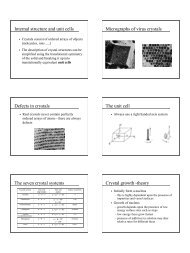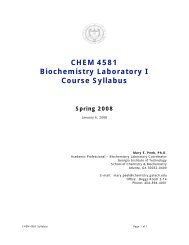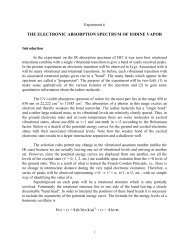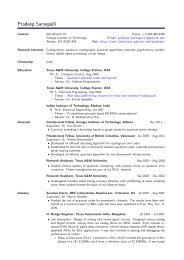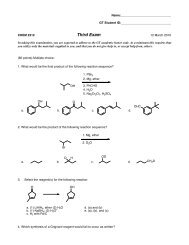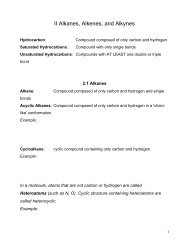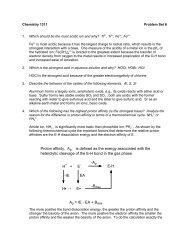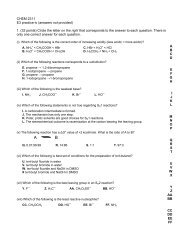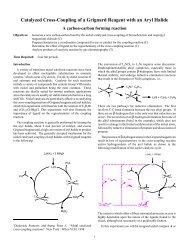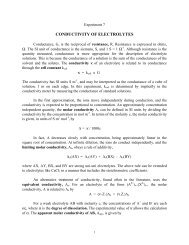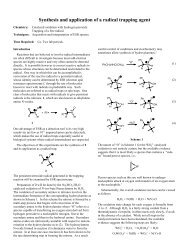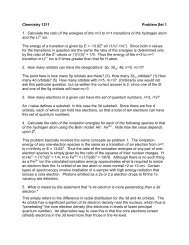Electronic absorption spectra Allowed vs forbidden transitions
Electronic absorption spectra Allowed vs forbidden transitions
Electronic absorption spectra Allowed vs forbidden transitions
You also want an ePaper? Increase the reach of your titles
YUMPU automatically turns print PDFs into web optimized ePapers that Google loves.
Transitions in d 1 and d 2 complexesEd xz d xy d yzd x 2 -y 2 d z 2 d xz d xy d yzd x 2 -y 2 d z 2 d x 2 -y 21d xzd xyd yzd x 2 -y 2 d z 2 d x 2 -y 2d z 2d xz d xy d yz1d xy d x 2 -y 21d xz1d xz 1 d z 2 1 d yz 1 d z 2 1d xy 1 d z 2 1 d yz 1 d x 2 -y 21d xz d xy d yzd x 2 -y 2 d z 2d x 2 -y 2 d z 2d xz d xy d yzSome compounds are very highly coloredbecause of charge transfer <strong>transitions</strong> – evensome with no d electrons● There can be electronic <strong>transitions</strong> in the visible region that donot involved d-electrons− MnO 4- (purple) and CrO 42-(yellow) are intensely coloredbecause electrons in filled oxygen based orbitals areexcited into empty d-orbitals (LMCT)− Ligand to Metal Charge Transfer (LMCT) bands have fewselection rule restrictions and are typically very intense● Metal to Ligand Charge Transfer (MLCT) bands may also occurfor complexes with d-electrons.− There are few selection rules and the high intensity of thesebands may mask d-d <strong>transitions</strong>.




